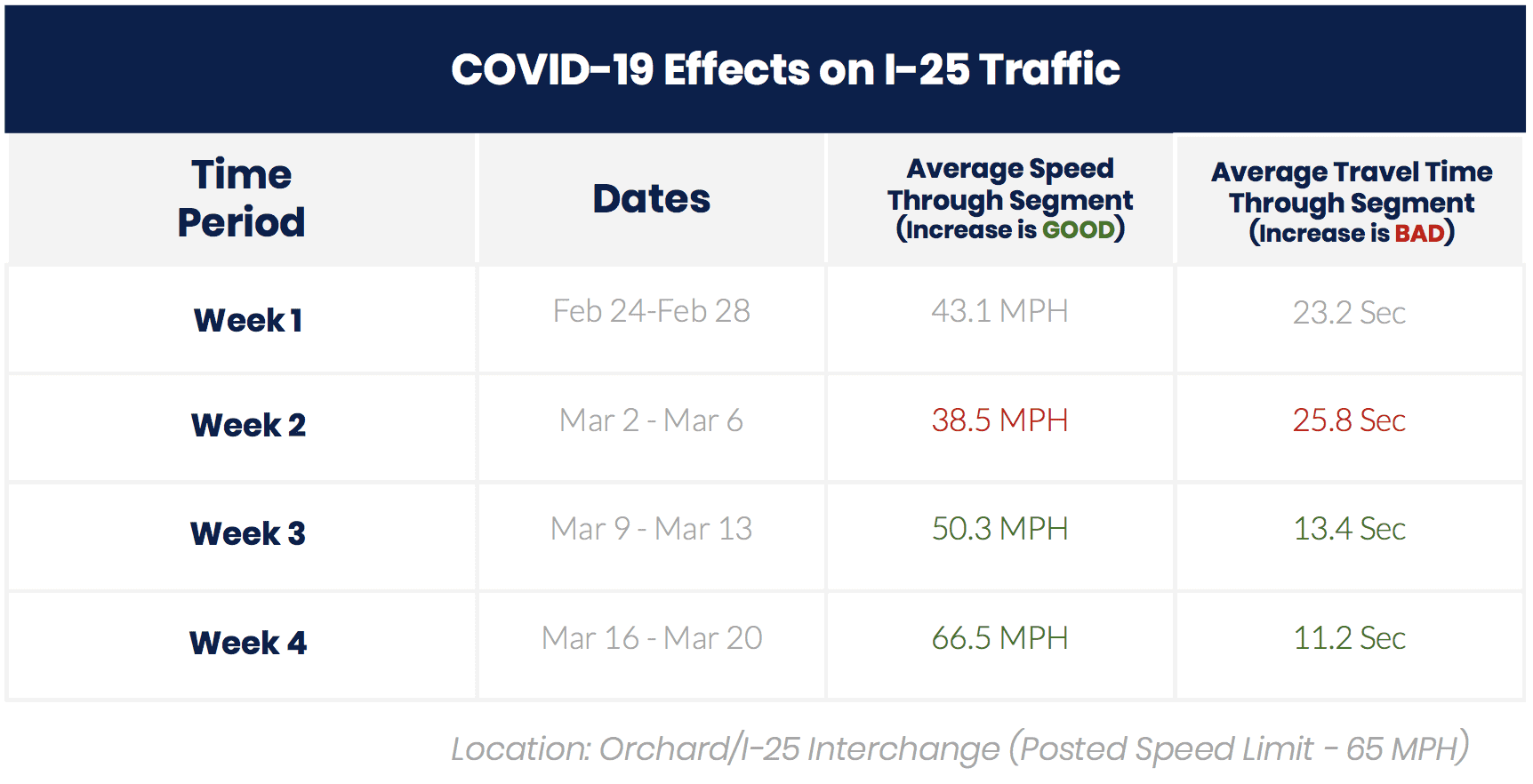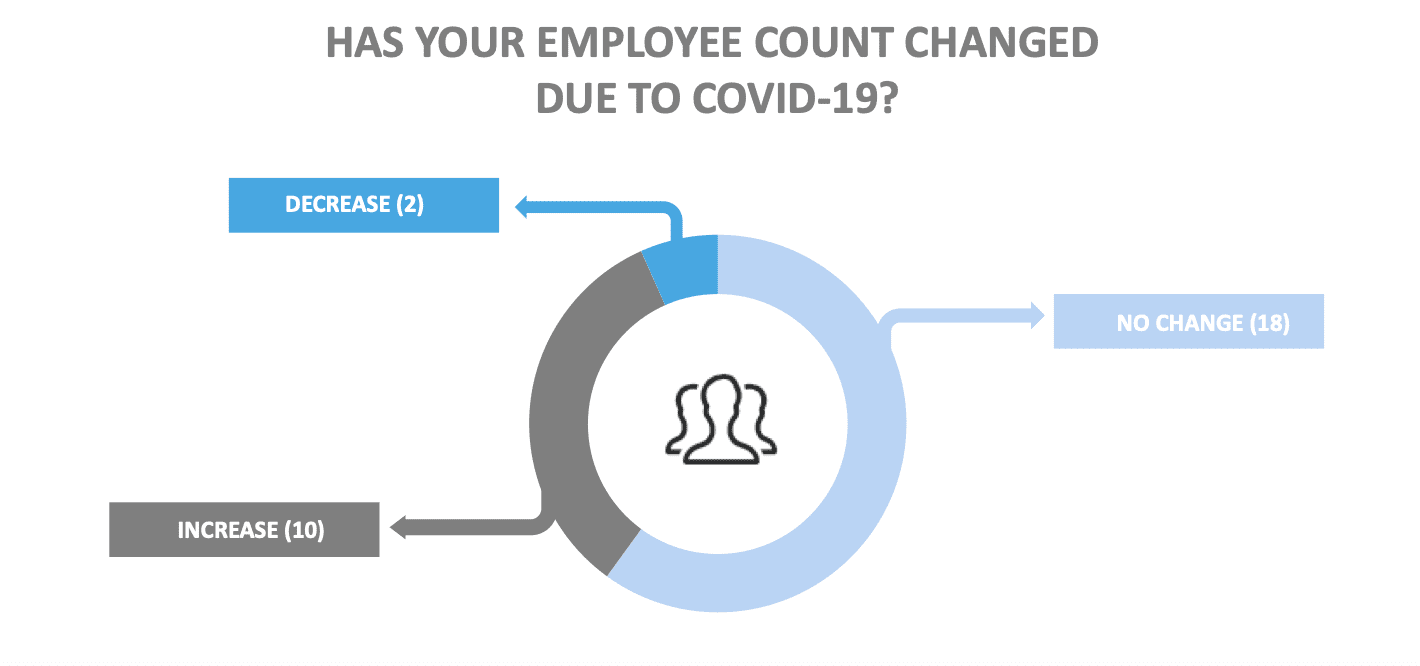Commuting on I-25 today, like so much of the world around us, feels very different than it did just a month ago. The impacts of the COVID-19 outbreak and statewide stay-at-home orders are surreal. In this unprecedented time there is virtually no traffic congestion on I-25. The bottlenecks and back-ups are gone—you can actually travel above the posted speed limit even in the busiest points in the day. (Not that you would do that sort of thing, of course.)
As a data-driven organization with a history of cross-sector collaborations to improve mobility, the Denver South Transportation Management Association (DSTMA) has partnerships that put us in a unique position to dive into this historic data.
Case in point: We’ve partnered with TomTom to use their MOVE tool to access real-time and historical traffic statistics to track impacts to the regional transportation network. In the pre-COVID world, this helped us with ongoing planning and investigating traffic incidents in real-time. With this unique insight, we can understand future commuting patterns and, in collaboration with our public sector partners, help design better systems over time.
Today, they show us just how distinctly, and how quickly, our day-to-day lives have changed.
A World Changed: Details in the Data
Using a high-level analysis using TomTom data, the DSTMA compared peak AM and PM rush hours (7-10 AM, 4-7 PM) every workday over the past four weeks. The results are pretty consistent throughout the corridor, but for purposes of comparison, we’ve chosen a ~1/10 mile segment of northbound I-25 just north of the Orchard/I-25 Interchange, circled in pink in the maps below.
As you would imagine, average speeds along I-25 have increased significantly – from 43.1 MPH in Week 1 to 66.47 MPH in Week 2. For anyone who has driven the south I-25 corridor during rush hours, it seems unfathomable that the overall average speed (66.5 MPH) is higher than the posted speed limit (65 MPH.) In the world of COVID-19, however, all things are possible.

Under normal circumstances, these impressive highway speeds and travel times would mean that we’ve accomplished our mission and the congestion conundrum would be solved. Of course, free flowing highways aren’t always a good thing for economic vitality. These figures are of course due to a pandemic that distinctly counteracts our overall purpose of driving economic development for the region. Overall productivity is reduced in parallel with travel times. Life will one day return to normal, Americans and Coloradans will go back to work, and the highways will once again be strained with employees moving through the region.
The Upside
Shelter-in-place orders are forcing a wide-scale, mandatory test of telecommuting policies, systems and technologies. As the concept of teleworking is rapidly utilized across the country, employers and employees have a once-in-a-lifetime opportunity to evaluate the effectiveness and flexibility of teleworking, not only as a congestion mitigation strategy but a business efficiency strategy. It’s fair to assume that few companies will shift to a fullyremote workforce in the future. But it’s also fair to assume that more companies will continue telecommuting in some capacity as an employee benefit.
From our community wide perspective, teleworking offers a solution to not only keeping the economy alive during a crisis, but also a significant benefit to the transportation system, the environment and employee well-being. It removes single-occupancy vehicles (SOVs) from the roadway network entirely. Teleworking, if adopted by employers even one or two days a week, could be a rare silver bullet in helping manage congestion on our highways.
Suggested Reading:
We applaud and encourage Denver South’s employers and employees to consider continuing operations by telecommuting even as the crisis subsides. If enough of us do so, we can continue to meet our longer-term transportation goals while ensuring a healthy and vibrant regional economy.
For more information on telecommuting, please reach out to Sheryl Machado, DSTMA’s Director of Communications and Public Affairs, today!


